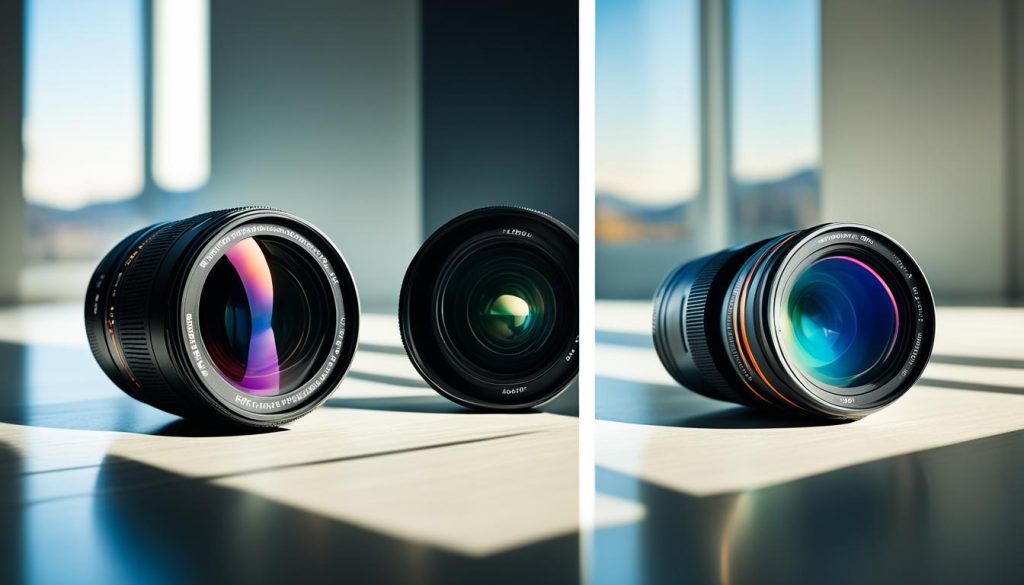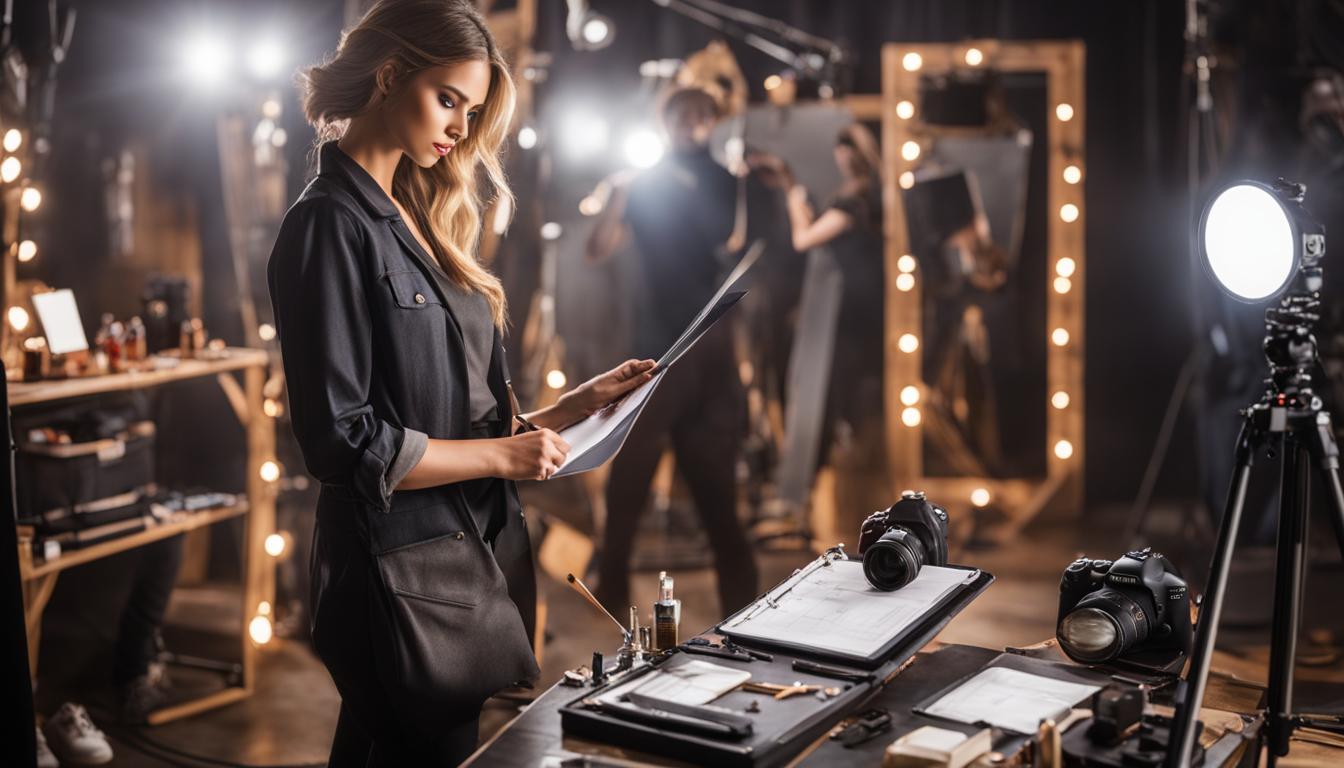Are you ready to capture stunning portraits? Whether you’re a professional photographer or just starting, using a portrait photography checklist is essential to ensure that you don’t miss anything in your shoot. In this guide, we will provide you with a comprehensive portrait photography checklist to help you capture perfect shots every time.
Key Takeaways
- A portrait photography checklist can help you capture perfect shots every time
- Using essential equipment is important for achieving stunning results in portrait photography
- Preparation is key when it comes to portrait sessions
- Mastering composition and lighting techniques are crucial to creating visually compelling and flattering portraits
- By following this guide and utilizing the portrait photography checklist, you’ll be well on your way to capturing inspiring portraits
Essential Equipment for Portrait Photography
Portrait photography requires a specific set of tools to achieve the desired results. The right equipment can make a significant difference in your photography, enhancing the outcome of your sessions. Here is the essential equipment you need to have in your arsenal.
Camera
Your camera is the most crucial piece of equipment for portrait photography. A high-quality camera with manual mode and interchangeable lenses is ideal. Full-frame cameras produce stunning details, but they come at a premium price. A crop-sensor camera is an excellent choice for portrait photography if you’re on a budget since it’s less expensive than a full-frame camera while still delivering great outcomes.
Lens
A high-quality lens is essential in portrait photography. A 50mm f/1.4 or a 85mm f/1.8 lens is a favorite among portrait photographers. These lenses produce a shallow depth of field, resulting in soft, creamy backgrounds that complement your subject. A zoom lens with a focal range of 70-200mm is also a good choice since it lets you zoom in without getting too close to the subject.
Lighting
Lighting plays a significant role in portrait photography, and it can make or break your shots. Natural light is beautiful, but sometimes you need additional lighting to achieve the desired outcome. Consider investing in a quality strobe or continuous light to create the perfect lighting condition for your subject. A reflector is also a useful tool in portrait photography, as it can redirect the light onto your subject to fill in any shadows.
Tripod
A tripod is a necessary tool in portrait photography, especially if you’re shooting at slow shutter speeds or in low light conditions. A sturdy tripod can stabilize your camera, reducing camera shake, and resulting in sharper images.
Props
Props can be an excellent addition to your portrait photography, contributing to the overall look and feel of your shot. It’s always a good idea to have a few props on hand, such as chairs, stools, and blankets, to create interesting compositions.
Tip: Always research and invest in high-quality equipment for the best results. You don’t necessarily have to break the bank, but investing in good gear is worth it in the long run.
Preparing for Your Portrait Session
Before your portrait session, taking the time to adequately prepare can make all the difference in the final results. Consider the following tips:
Location is Key
When selecting the location for your portrait session, consider the mood and overall aesthetic you’re going for. A serene park, a bustling city street, or a cozy living room can all provide unique backgrounds for your portraits. Make sure the location suits your subject and their personality.
Composition is Crucial
Planning the composition of your portraits in advance can help you achieve more aesthetically pleasing results. Consider framing, posing, and props (if applicable). Utilize the rule of thirds, leading lines, and negative space to create a visually intriguing portrait.
Communicate with Your Subject
Before and during the session, communicate clearly with your subject. Establish a connection, make them feel at ease, and give direction when necessary. Encourage them to relax, be themselves, and show their authentic personality in the photos. This will capture engaging and genuine portraits.
Mastering Composition and Lighting Techniques
Composition and lighting are two of the most important factors in creating stunning portrait photography. The proper use of these techniques can elevate your portraits from average to exceptional. 
Composition Techniques
Composition is all about how you frame your subject and the elements you include in the shot. The goal is to create a visually compelling portrait that draws the viewer’s eye to the subject and conveys their story.
- Rule of thirds: Position the subject at the intersection of imaginary horizontal and vertical lines, one-third from the edge of the frame. This creates a balanced composition and adds visual interest.
- Leading lines: Use diagonals or lines that lead towards the subject to guide the viewer’s eye and draw attention to the subject.
- Symmetry: Use symmetry to create a sense of balance and harmony in your portrait.
Lighting Techniques
Lighting is the key to creating mood and atmosphere in your portrait. Proper lighting can flatter your subject and highlight their best features while also enhancing the overall composition of the shot.
- Natural light: Use natural light to create soft and flattering portraits. Position your subject near a window or in open shade to create a soft, diffused light.
- Artificial light: Utilize artificial light sources such as studio lights, flash, or continuous lighting to create dramatic and dynamic portraits.
- Reflectors: Use reflectors to bounce light back onto the subject’s face and fill in any shadows, creating a well-lit and balanced composition.
By mastering composition and lighting techniques, you can take your portrait photography to the next level. Keep practicing these techniques to refine your skills and create stunning portraits that tell a story.
Portrait Photography Checklist Conclusion
By following this comprehensive portrait photography checklist guide, you are now equipped to capture stunning shots every time. Remember to utilize the essential equipment discussed in section 2, prepare adequately as outlined in section 3, and master composition and lighting techniques, which we delved into in section 4.
Make sure to take your time and communicate with your subjects to create engaging and authentic portraits. And don’t forget to refer back to this checklist before every shoot to ensure you have everything you need for a successful session.
With all these tips in mind, you’re ready to create inspiring portraits that will leave your clients thrilled with the results. So grab your camera and start shooting!






